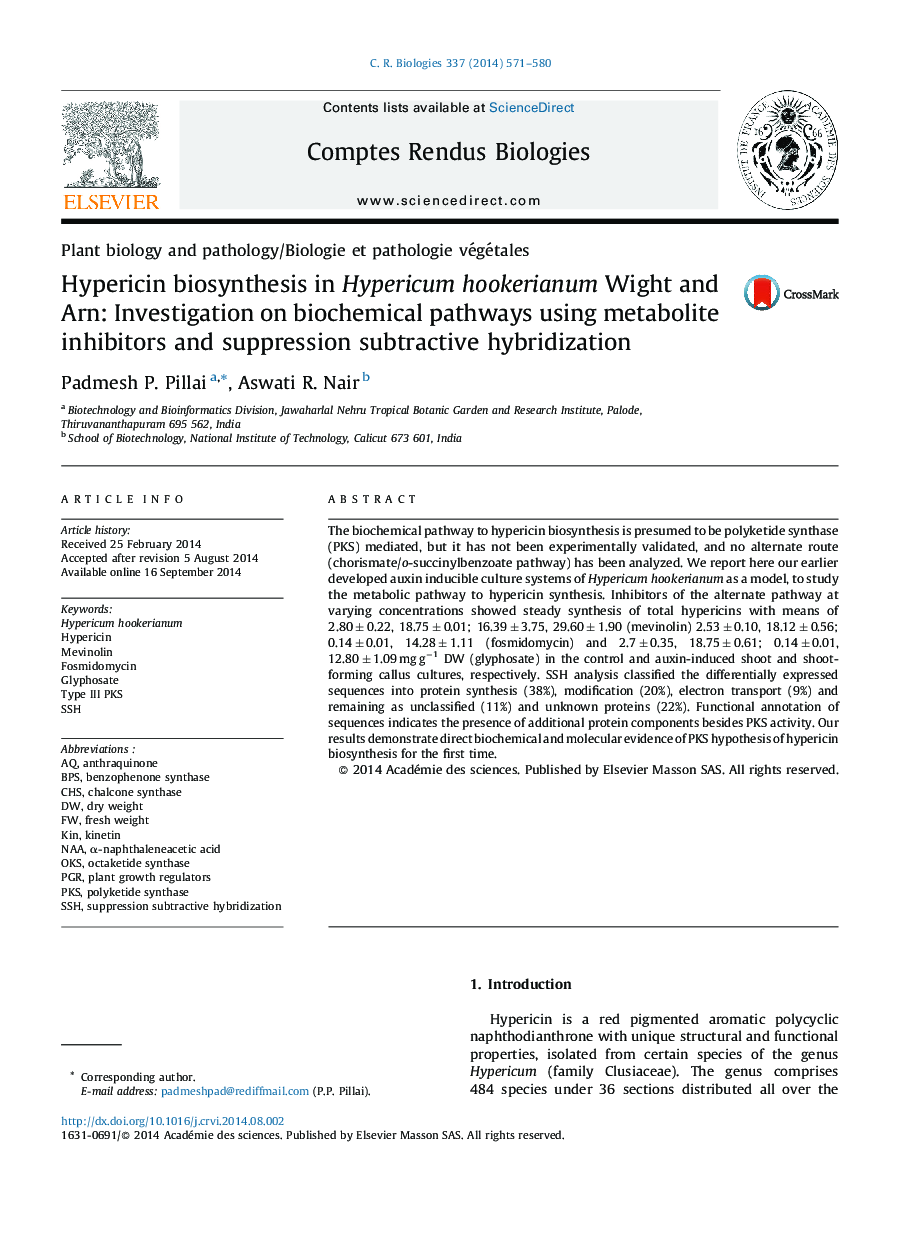| Article ID | Journal | Published Year | Pages | File Type |
|---|---|---|---|---|
| 2783464 | Comptes Rendus Biologies | 2014 | 10 Pages |
The biochemical pathway to hypericin biosynthesis is presumed to be polyketide synthase (PKS) mediated, but it has not been experimentally validated, and no alternate route (chorismate/o-succinylbenzoate pathway) has been analyzed. We report here our earlier developed auxin inducible culture systems of Hypericum hookerianum as a model, to study the metabolic pathway to hypericin synthesis. Inhibitors of the alternate pathway at varying concentrations showed steady synthesis of total hypericins with means of 2.80 ± 0.22, 18.75 ± 0.01; 16.39 ± 3.75, 29.60 ± 1.90 (mevinolin) 2.53 ± 0.10, 18.12 ± 0.56; 0.14 ± 0.01, 14.28 ± 1.11 (fosmidomycin) and 2.7 ± 0.35, 18.75 ± 0.61; 0.14 ± 0.01, 12.80 ± 1.09 mg g−1 DW (glyphosate) in the control and auxin-induced shoot and shoot-forming callus cultures, respectively. SSH analysis classified the differentially expressed sequences into protein synthesis (38%), modification (20%), electron transport (9%) and remaining as unclassified (11%) and unknown proteins (22%). Functional annotation of sequences indicates the presence of additional protein components besides PKS activity. Our results demonstrate direct biochemical and molecular evidence of PKS hypothesis of hypericin biosynthesis for the first time.
Graphical abstractFigure optionsDownload full-size imageDownload as PowerPoint slide
